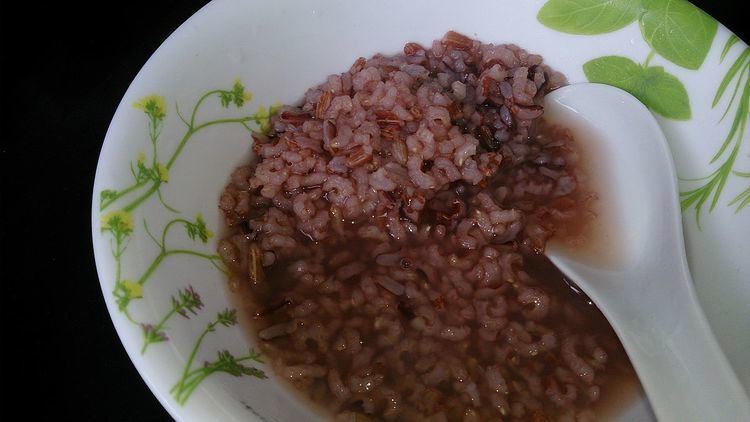 | ||
Palakkadan Mutta rice is a variety of brown rice known for its coarseness and health benefits. It is cultivated in Palakkad district of Kerala in India and used for a variety of dishes in India and Sri Lanka.
Contents
History
Red rice was originally invented in China during the Tang dynasty in 800 AD. Palakkadan Mutta rice was the choice of the royal families of Chola and Chera dynasties of India. The poorer sections of the society had no access to it as this variety was considered very expensive at that time.
Nutrition benefits
Palakkadan Matta rice more nutritious than ordinary brown rice and the white polished rice. One serving cup of 1/4 size can contain 160 calories and 1 gram of fibre. White rice doesn't contain any fibre. The brown outer layer of the Mutta rice contains many nutrients and white rice is made by polishing away this valuable layer. One cup of Matta rice can contain 84 grams of magnesium and one gram of calcium. It also contains vitamins.
Cooking brown rice
Brown rice is harder than white rice and needs some thirty minutes of soaking before cooking.
Cultivation
Palakkadan Mutta rice is cultivated in the dense black cotton soil of Palakkad district in Kerala. The rice has a distinct earthly flavour because of the type of soil in which it is cultivated. These paddy fields are called 'poonthalpadam' and the soil contains a lot of clay and silt. Because of these qualities, this kind of paddy fields can retain more water.
Adulteration
A serious health hazard is the wide availability of artificially colored Mutta rice. The color added for this purpose can be harmful to the body. There are complaints that such varieties are widely distributed through the subsidized public distribution systems on which the poor depend heavily.
Health benefits
Palakkadan Mutta rice contains manganese and zinc, which can have antioxidant properties and can protect the body from damaging poisons. This variety of rice also contains vitamin B6 that helps to balance RBC in the bloodstream. It is also believed to be capable of controlling cholesterol. Red rice is completely fat-free and can lower the risk of obesity. Because of the rough taste, only a lesser quantity is consumed every meal. Red rice is also capable of fighting asthma.
